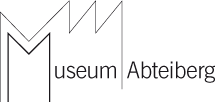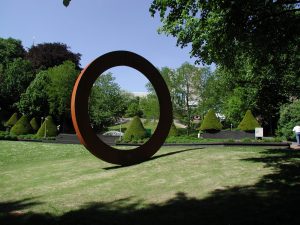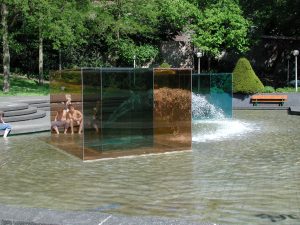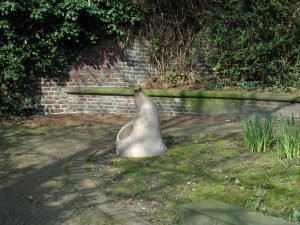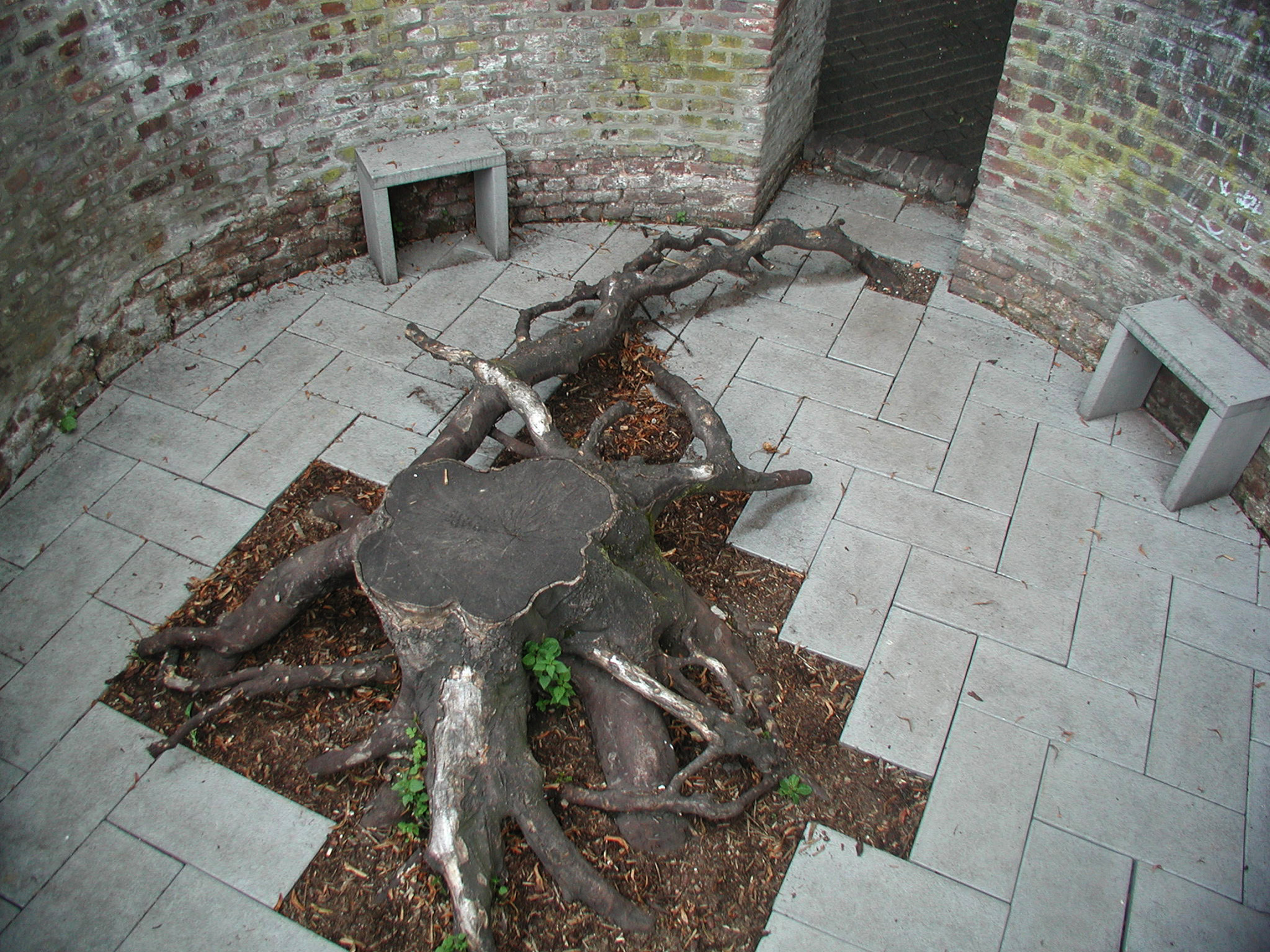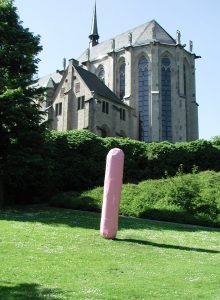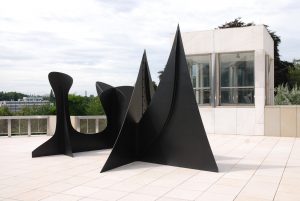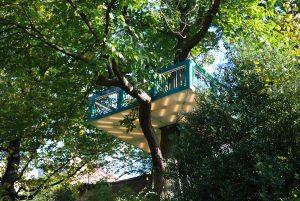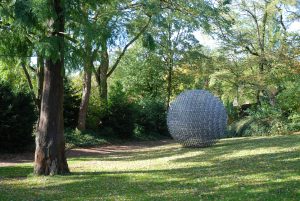The Abteiberg Sculpture Garden was opened on May 11, 2002 as part of the artistic routes planned for the decentralised “EUROGA 2002 plus” garden show. It finally gave the Museum Abteiberg an exterior dimension that had always been planned but never implemented, embedding the museum in the urban location of the Abteiberg, directly adjacent to Mönchengladbach’s Alter Markt.
To date, the new Sculpture Garden was defined by two landscaping concepts: Hans Hollein’s “Rice Terraces” in the upper half (1974-82) and the pseudo-Baroque ground level by Karl Birkigt on the lower half (1975). Both designs architecturally transformed the former abbey orchard for their own purposes, leaving little room for sculptures. A charming park situation with copper beeches and chestnut stretches from the museum platform up to a lower wall, which forms part of the old city walls. The sculptures “Soft inverted Q” by Claes Oldenburg, “Tree of water / Breath of Leaves” by Giuseppe Penone, “Juan” by Bernhard Luginbühl and “Königsstuhl” by Anatol were installed in the upper section of the abbey garden in 1982. They are joined by a rectory garden to the west, which is separated by a low wall and adjoins the Romanesque minster.
In the context of the Euroga garden show, funds from the State of North Rhine Westphalia and the City of Mönchengladbach were made available to purchase six sculptures by renowned artists. Some of the pieces were specially designed for the abbey garden.
The Arolsen-Piece produced in 1992 by the American minimal artist Larry Bell (born1939) forms the centrepiece. Two double-cubes made of alternating pink and azure glass are placed diagonally into the existing water basin beside the fountain, creating colourful lines of sight and reflections that fill the existing washed concrete Baroque cliché with new life.
The six-metre high Anello (Ring), constructed out of COR-TEN steel in 2001 by the Italian conceptual artist Mauro Staccioli (born1937), has an almost contrapuntal effect. The elegant sculpture takes its location almost literally by appearing to roll down the slope of the lower green, thereby setting the almost hieratic centre of the park in motion.
The Frenchman François Morellet (born 1926) also belongs to the generation of constructive conceptual art. His almost 3 metre high Sphère, an orb consisting of intermeshed rectangular stainless steel rods, expresses the penetration of the orb and cube as a visual, insubstantial, rather than haptic form. The almost floating sculpture by Morellet dominates the lower part of the green in the rectory garden. The upper section is dedicated to a more recent form of conceptualism. The “Flause” sculpture (1998) by Viennese artist Franz West (born 1947) is a pink pill-shaped aluminium sculpture that is slightly shifted from its vertical axis, a capriccio that whimsically unites pop art, happening and self-reflection.
The intimate bronze stele by Mönchengladbach artist Maria Lehnen (born 1949) is situated by the steps towards the abbey gardens, creating a conceptual line of sight with the “masculine” throne by Anatol.
The remaining sculptures are by three young artists, representing the aesthetics of the 1990s. The American Jorge Pardo (born 1963) created a group of six small bronzes that line the paths above and beside the fountain. Their organic, abstract amoebic forms have openings and carry plastic bags. As the title “Garbage Can” reveals, they serve as rubbish containers, combining in a chameleon-like way the role of sculpture with the utility of practical objects.
Dan Peterman (born 1960) from Chicago focuses on the role of refuse and transience throughout his sculptural material. The root of a copper beach tree in a ruined tower of the old city wall by Spatzenberg is the point of departure for his walk-through sculpture. Slabs and seats made of recycled plastic integrate the dead root to create a quiet corner – a paradigm of permanence and transience.
The combination of nature, art and life is clearest of all in the tree house by Hamburg sculptor Stefan Kern (born 1966). Situated high in the air around the trunk of an old chestnut, the quadrangular platform made of aluminium sheeting is a utopian, independent development derived from nearby constructive and decorative ideas by Hans Hollein. The walkable gleaming lookout, which can be accessed “at one’s own risk”, hovers in the treetops like a UFO.
In front of the museum, outside the abbey garden, sculptures by Alexander Calder, Thomas Rentmeister and Daniel Pflumm send artistic signals and create a transition to the planned sculpture mile in the city of Mönchengladbach.
Opening hours: May – September: 10.00 – 20.00, October – April: 10.00 – 18.00
for 300 dpi: klick on image, then save
